Dear Tourists: This National Park's Neighbors Have Taken to Instagram to Change Your Ways

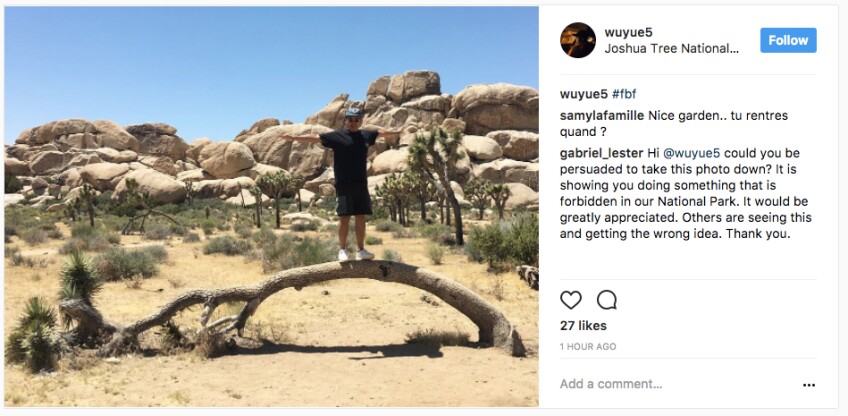
Joshua Tree National Park is more crowded than it's ever been, and the Park's natural resources are taking a beating. While the majority of visitors are respectful of the desert landscape, many people touring Joshua Tree don't realize just how fragile the rugged-looking desert is. And a few, apparently, know but don't care.
Social media makes the situation worse, allowing visitors to easily advertise their misbehavior to thousands of potential imitators.
On Instagram, for instance, the majority of posts from Joshua Tree are sublime, adorable, salacious (and NSFW) or a mixture of the three. But some show destructive behavior, normalizing it and encouraging others to repeat it. The National Park Service doesn't have the resources to educate everyone visiting Joshua Tree about why certain acts — like climbing or suspending hammocks from the Park's namesake trees — are inappropriate here. And so for the last few years, frustration has been building among the Park's neighbors in Joshua Tree and nearby towns as they see more examples of misdeeds ranging from violations of Park rules governing camping, fires, and dogs to deliberate vandalism.
Some of those neighbors, seeing that NPS is outgunned, are taking matters into their own hands. And they're using the same social media that seems to be causing the problem in the first place.
Locals like Instagram user Naturetroller have taken to offering surprisingly cordial comments on problematic social media posts in an attempt to persuade people to remove the offending photos and videos. At the very least, users like Naturetroller ask visitors to make their photos private or remove hashtags like #joshuatreenationalpark to make the posts harder to find.
"I realized that venting at people wasn't changing any minds," Naturetroller told me. "So I started responding to bad Instagram posts by just copying and pasting National Park Service rules in comments on those photos. A lot of people take the photos down pretty quickly."
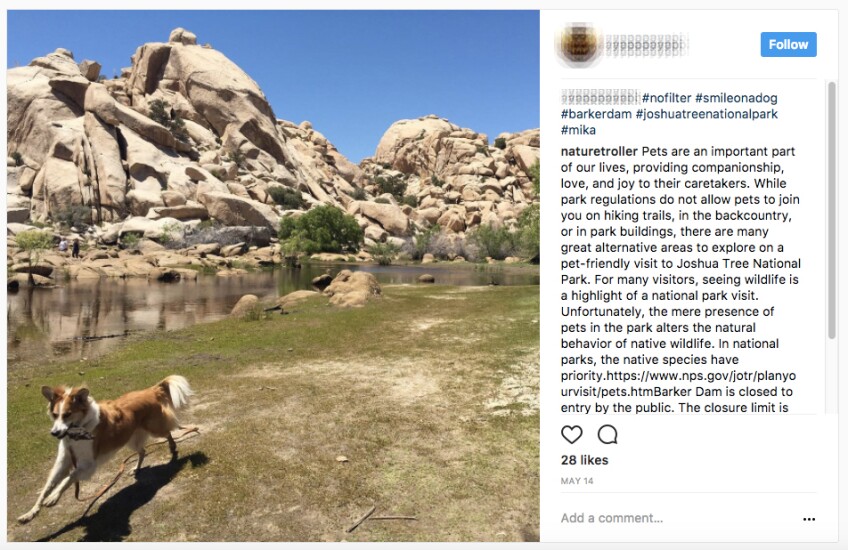
Naturetroller isn't alone. Despite both simmering crowding-related tensions among Joshua Tree locals and long-standing comment thread tradition, the Park's neighbors seem to have reached an informal consensus that calm persuasion is the best approach.
The recent storm of anger surrounding the Storror Parkour team's recent, multiply illegal visit to Joshua Tree hasn't changed that commitment to be cordial, though for many locals it has heightened the urgency of the misbehaving visitor issue. (According to Joshua Tree National Park's Public Information Officer George Land, the Justice Department is still considering how to proceed with its case against the Storror Parkour team, who have returned to the United Kingdom.)
Patience might seem a little hard to summon, given the sheer magnitude of the impact millions of annual visitors are having on the park. Some Instagram visitors are extremely reluctant to consider the possibility that their actions, and their publicizing of those actions, have any effect on Park wildlife.
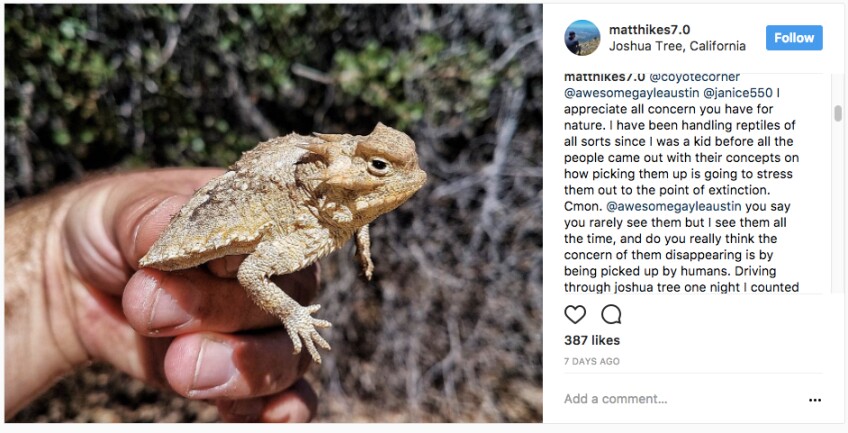
On occasion, the Instagram user being contacted will argue a bit before deleting the photo, as was the case with this photo. (Where photos have been deleted by their posters, we've obscured the identity of the poster.)
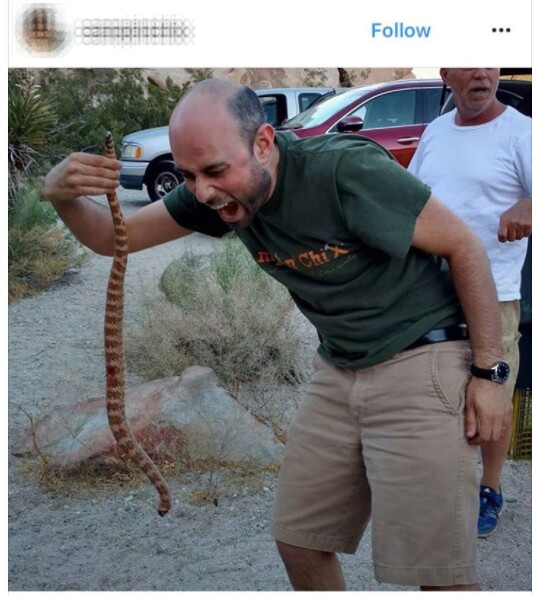
Some users document themselves feeding wildlife, a serious violation of Park rules, especially when the animal being fed is listed under the federal Endangered Species Act:
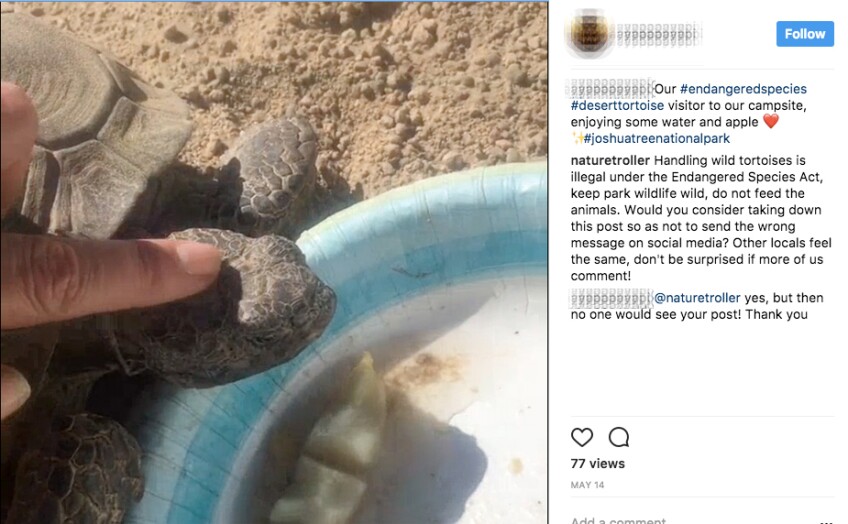
As you can see in the comments on the tortoise image, visitors are sometimes reluctant to admit that they've done anything wrong. Sometimes, the visitor's reluctance to concede that they may have done damage to the Park or its wild residents is understandable. Generations of National Park tourists have taken photos of themselves or their families sitting or standing atop fallen giant sequoias in Yosemite, for instance. (Which is not to say that sequoias can't be trampled to death by tourists.)
But while many trees can withstand a limited amount of stress from tourists standing on their trunks, Joshua trees are different. Their root systems aren't that extensive, and every season of strong wind in the Mojave will uproot a few. Standing or sitting on a fallen one means you're using the tree as a lever to pop those roots even farther out of the ground. And though it's bad enough when one person puts their weight on the tree, in Joshua Tree National Park things are rarely done by just one person.
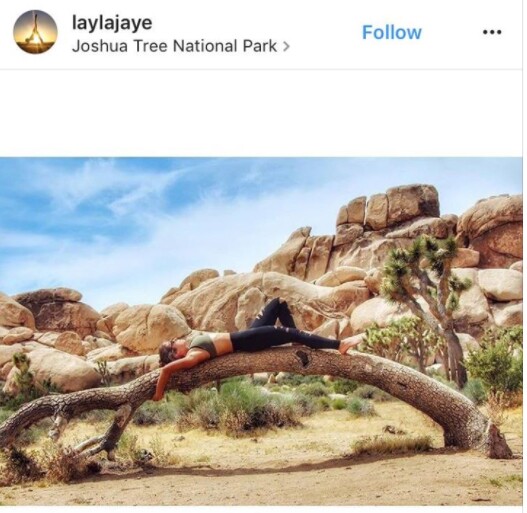
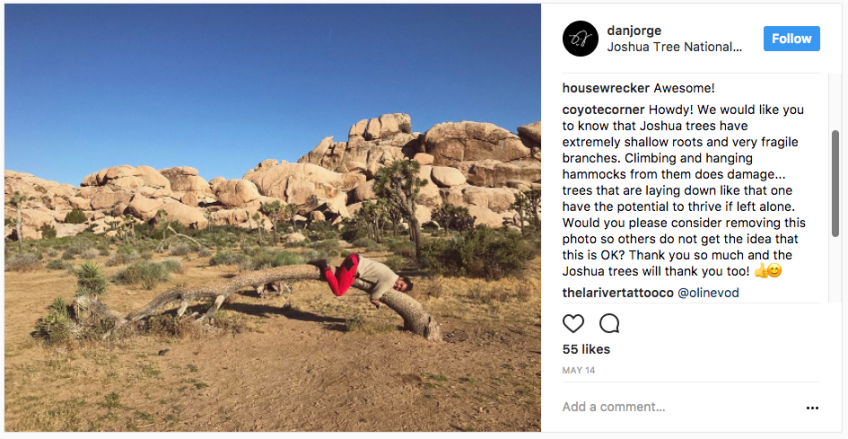
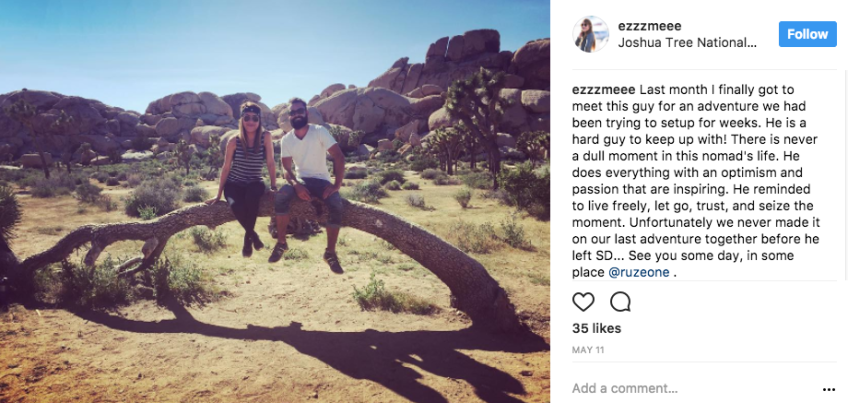
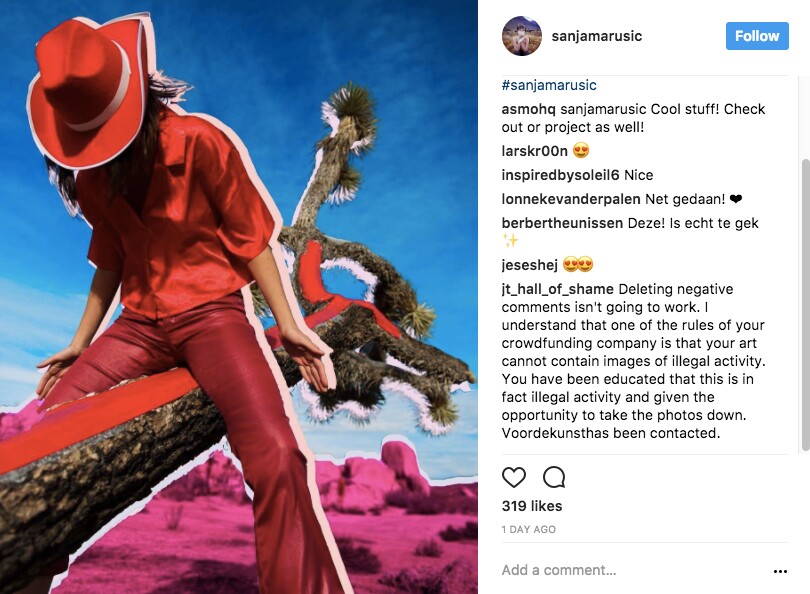
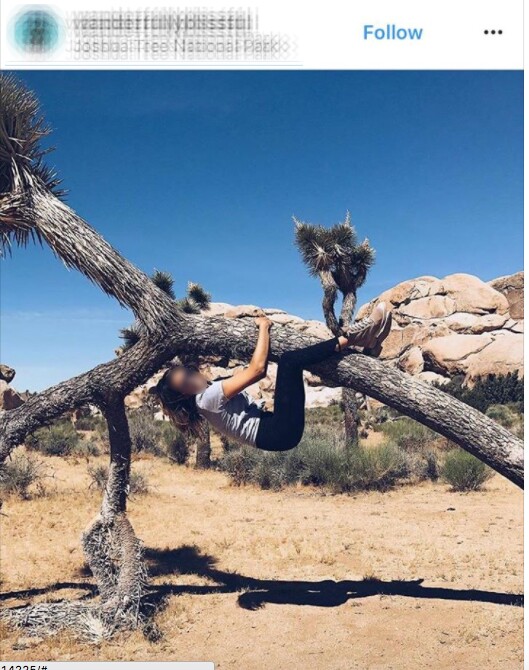
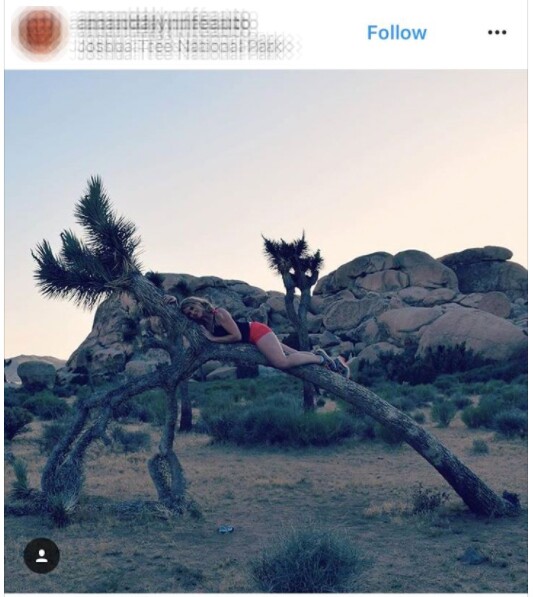
Sometimes, the visitor persists in defending his (it's usually "his") behavior, even when provided with unambiguous evidence that it's behavior the Park Service considers harmful to park resources.
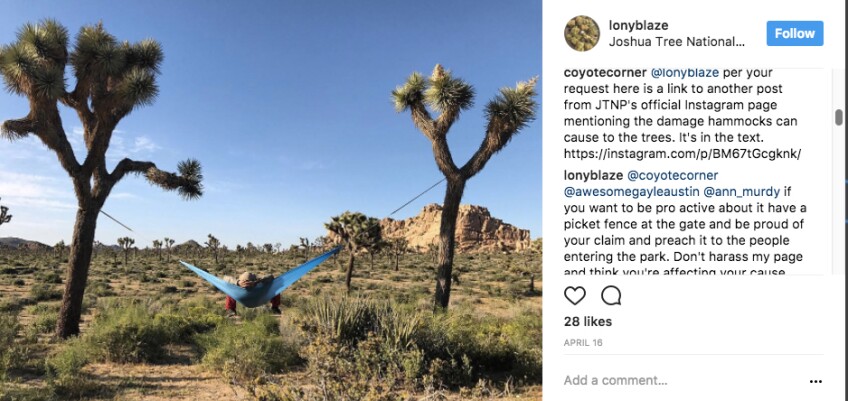
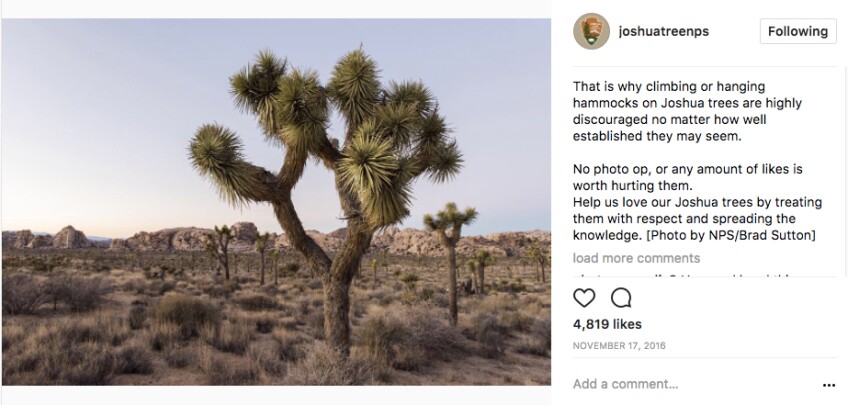
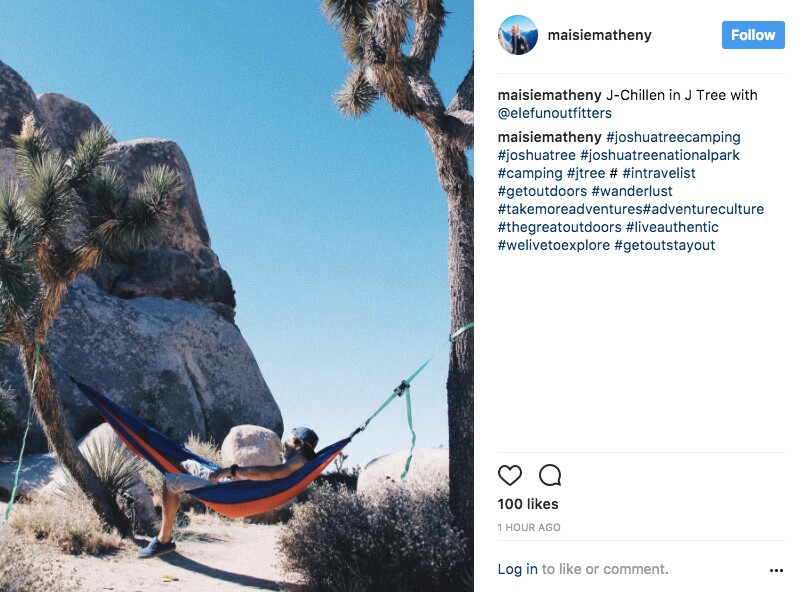
And sometimes, there would seem to be no excuse at all for visitors' behavior, such as this image of a couple posing atop a crumbling historic wall.
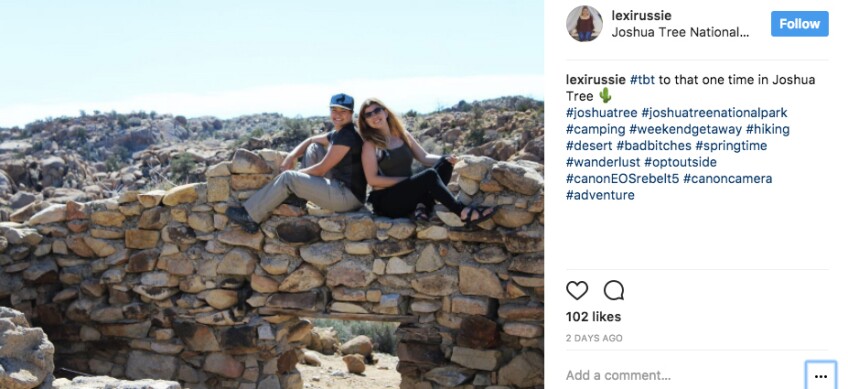
But for the most part, Joshua Tree National Park's neighboring Instagram activists are keeping their cool, determined to advocate for the Park's welfare calmly and constructively. According to Naturetroller, that's the only way to persuade as many people as possible.
"Ranting can be cathartic, and some of these people are doing things that really get me worked up," Naturetroller told me. "But I don't want to win arguments: I want to change the way people see the desert, and how they should be when they're here."
Joshua Tree National Park's George Land couldn't be happier with that approach. "When [street artist] Mr. Andre tagged a boulder in Joshua Tree, people exploded, and there were threats against his life," said Land. "That's not productive. The National Park Service opposes threats; we're all human beings here, and making threats doesn't solve anything."
"Most people just don't understand how their behavior causes problems for the Park, and responding to them as human beings is a much better way of addressing the problem than yelling at them," said Land. "It's really the best way to protect the Park."
Banner: A typical sign in JTNP nowadays | Photo: daveynin, some rights reserved


